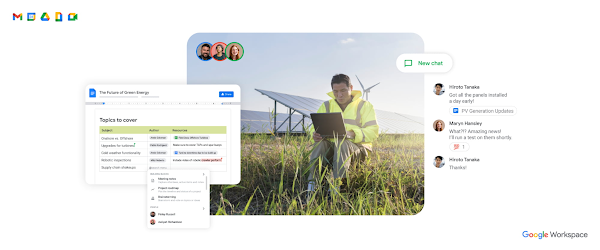When we talk about reimagining the future of work, one group that’s often left out of the conversation is the frontline workforce. The pandemic, however, has reminded us of the importance of frontline workers. With the exodus of frontline workers in the ongoing Great Resignation, there’s now greater urgency for businesses to rethink the workplace experiences on the frontlines.
From healthcare workers to bus drivers, these employees continue to provide the essential services we’ve needed throughout the pandemic. They’ve stocked our grocery store shelves, shipped our packages, and provided crucial services in areas like healthcare and education. Globally, frontline workers make up80% of the workforce and they are the backbone of many key industries such as manufacturing, healthcare, retail, and transport.
Yet, as businesses scrambled to adapt to the onset of the pandemic two years ago, 65% of deskless workers didn’t have the right technology to do their jobs. By comparison, knowledge workers managed the transition to remote work relatively smoothly. This digital divide has only become wider and harder to ignore over time. To reimagine the workplace for frontline employees, businesses in Asia Pacific need to find ways to bridge this gap.
Collaboration equity is key
Businesses that embrace the idea of collaboration equity can move more quickly to close the digital divide. Collaboration equity is the ability for everyone to contribute equally, regardless of location, role, experience level, language, or even device preference. Within organizations, it fosters the kind of culture that breeds innovation, creates stronger human connections, and enhances productivity.
From a technology standpoint, it means moving away from old ways of working that are often characterized by hierarchies, information silos, and legacy systems. Collaboration equity calls for new technology that empowers employees in the field to be agile, flexible, and more productive—no matter where they’re working from.
Frontline workers should be able to engage with their peers and gain equal access to information and training resources to be successful in their roles. They should also be able to suggest a new product or service, provide feedback about internal processes, or exchange insights with colleagues across the company. In short, frontline workers should feel heard and included. And research shows that highly engaged employees are87% less likely to leave their companies than their disengaged counterparts.
How technology is shaping work on the frontlines in APAC
It’s great to see that some Asian Pacific businesses in industries such as retail, travel, and manufacturing are adopting cloud technologies to empower their frontline workers. At Google, we work with customers in many of these industries—and we see how a cloud-based solution like Google Workspace can transform the frontline work experience.
For one thing, it gives frontline workers everything they need to do their work, all in one place: access to files, seamless collaboration, corporate communication channels, and intuitive search functions. Employees can also work on their mobile devices securely without a VPN, thanks to built-in Mobile Device Management.
Google Workspace can vastly improve how frontline employees connect, create, and collaborate—both with their frontline peers and corporate colleagues.
Pulling down barriers to communication
Unlike office-based workers, frontline workers often lack access to digital tools to collaborate with their colleagues, and technology needs to do more to fill this gap. With many of our customers in APAC, including large retailers, Google Workspace is keeping thousands of employees connected across stores, offices, and regions. Employees can collaborate with their colleagues company-wide, with access to internal tools like Chat and Spaces.
Providing these engagement tools helps to create a sense of community. People are also kept in the loop on important information, such as a new promotion at a regional store or the latest company news. And because people feel included, it gives them a sense of belonging and nurtures the affinity for the company they work for.
Lifting the burden of manual, repetitive tasks
Across APAC, we’re continuing to see more mobile apps automating manual tasks for employees. This is good news for frontline workers, since many of them believe that automation will offer them an opportunity to qualify for more highly skilled work. Asia is also making big strides in the area of AI innovation. Using digitization, for example, the person who delivers parcels can easily mark a delivery complete by uploading a photo to a corporate system. And in manufacturing, AI automates tasks such as maintenance and safety reporting for shop floor and field workers. Relieved of repetitive tasks, people can engage in more meaningful work, resulting in improved job satisfaction. Google Workspace will continue to play an important role in this area.
Enabling smoother collaboration and teamwork
In a recent global hybrid work survey commissioned by Google Workspace, nearly 60% of people in APAC say that limited ability to collaborate leaves them frustrated. But it’s a workplace frustration businesses can easily address. When Korean Air moved its work processes to the cloud in 2019, it made collaboration easier and smoother for its cabin crew and ground staff. Its cabin crew started using Drive, allowing them to easily share flight details about in-flight meals and galley management with each other. Flight attendants no longer had to compile weekly meeting memos. Instead, they started working from a shared document on Docs that stayed updated in real time. These new tools have improved workplace communication, creating a smoother experience for Korean Air’s staff.
We’re at a turning point as we figure out what the future of work will look like. And it’s not too late for businesses to rethink the workplace for their own frontline workforce. With the chance to hit reset, businesses can now prioritize what matters most: the happiness and job satisfaction of frontline employees as they serve customers. All frontline workers want to feel included, to be able to contribute effectively from anywhere, and to collaborate more easily with their co-workers. And the crucial first step to making this happen is empowering frontline employees with the digital tools to improve their workplace experience.
Cloud BlogRead More


